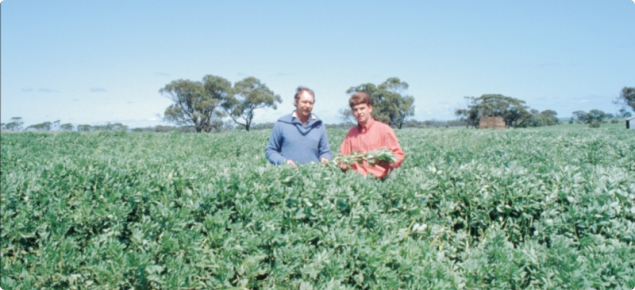Faba bean rust is not widespread in Western Australia. Low to moderate levels occur in the Esperance and Katanning regions. Individual crops suffer yield losses in some years. Rust has been recorded in the high rainfall region in the northern agricultural area around Dongara.
Faba bean rust (Uromyces viciae-fabae var. viciae-fabae) is host specific. It does not infect cereals or other break crops.
Symptoms and infection cycle
Faba bean rust has a complex life cycle with three different stages occurring through the season. Each stage produces different symptoms.
The rust fungus survives over summer in crop residues both in the paddock and as dust and trash on the seed. Rust spores produced on these residues are blown onto new crops by wind, infecting faba bean seedlings and volunteers. Infected volunteers are thought to be an important factor in the early development of rust epidemics.
Rainfall or dew is necessary for spores to infect after they land on a susceptible plant. Within 2-3 weeks new pustules form on infected leaves and stems. Spores are blown from these to spread the disease to other faba bean plants and crops. Severe rust infections cause reduction in the green leaf area during pod filling and also premature defoliation. This results in smaller seeds and yield losses of up to 30%. Yield losses can be much higher where rust occurs as a mixed infection with chocolate spot.
Aecial stage symptoms
Small creamy-yellow spots (pustules) develop on the leaves early in the season. The spores (aeciospores) produced in these pustules are wind dispersed and spread rust within the crop and to other faba bean crops.
Uredinial stage symptoms
Orange-brown pustules surrounded by a pale halo on leaves and stems soon replace the aecia. These infections are similar in appearance to rusts on cereals. If you wipe your finger over the pustule it will leave a rusty deposit. The pustules contain large numbers of spores (urediospores) that spread the disease through the crop canopy.
Telial stage symptoms
Black-brown pustules usually surrounded by a pale halo on stems and leaves appear late in the season. This is the resting stage that survives over summer. The pustules contain the resting spores (teliospores) which initiate disease the following season.


